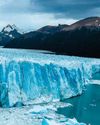Amazing Algae
How It Works
|Issue 111
These organisms are more than just green slime - they have shaped human history and will go on to protect our future

You can find algae almost anywhere you can find water, from magnificent giant kelp forests rising from the ocean floor to the thin green film resting on a shallow pond. Over millions of years they have evolved to survive in the most extreme environments: deep within the ice of the Arctic, around acidic ocean vents and in lava flows. Even in puddles, within the bark of trees, and inside droplets of dew on grass in the morning, microscopic algae diatoms will be thriving – they are masters of survival.
Algae have shaped life on our planet, and without them many of the species alive today wouldn’t exist. Entire ocean ecosystems rely on them as a source of food, and over half of the oxygen we breathe comes from these remarkable organisms. Algae even play a role in the formation of clouds.
Throughout human history they have sustained us through famines and provided our species with medicine and nutrition. Today, having harnessed the power of algae, we use them in everything from food and pharmaceuticals to cosmetics and fuel. They are arguably the most important organisms in the world, but could they offer us even more in the future? Around the world people are looking towards algae to provide solutions to some of our planet’s greatest challenges.
WHAT ARE ALGAE?
Algae are a genetically diverse group of over 48,000 different species. They come from a wide range of different evolutionary lineages that can’t be truly classified as animals or plants. As a result they are lumped into a group known as protists – a category for predominantly single-celled living organisms that don’t fit into any other. They are also ancient – fossil records indicate that red algae date back at least 1.6 billion years.
Cette histoire est tirée de l'édition Issue 111 de How It Works.
Abonnez-vous à Magzter GOLD pour accéder à des milliers d'histoires premium sélectionnées et à plus de 9 000 magazines et journaux.
Déjà abonné ? Se connecter
PLUS D'HISTOIRES DE How It Works
How It Works UK
20 WEARABLE HEALTH TRACKERS
Whether you strap a wellness coach to your wrist or weave subtle sensors into your clothes, these devices are revolutionising how we track our health
9 mins
Issue 210
How It Works UK
SUPERPOWERED PLANTS
The world of plants is vibrant and diverse, just like this book.
1 min
Issue 210
How It Works UK
SECRET STORIES OF LOST BEASTS
We're all aware of the mighty dinosaurs that once roamed Earth, but there are so many weird and wonderful species that have been lost to time.
1 min
Issue 210

How It Works UK
ALL ABOUT BLIMPS
Is it a bird? Is it a spaceship? No... it's a non-rigid airship
2 mins
Issue 210
How It Works UK
SUPER QUESTERS MISSION: RAINFOREST MAGIC
Join adventurers Leo, Lilli and Bea as they transform into superheroes and journey to the rainforest in the pursuit of knowledge.
1 min
Issue 210

How It Works UK
HOW THE MIGHTY MAMMOTH RULED THE ICE AGE
Meet the prehistoric giants that roamed the Arctic Circle thousands of years ago
4 mins
Issue 210
How It Works UK
Have they found LIFE ON MARS?
Although it's by no means certain, scientists are slowly accumulating evidence that life once existed on the Red Planet
2 mins
Issue 210

How It Works UK
HOW FAST DO GLACIERS MOVE?
The speed at which a glacier flows depends on its mass, the depth and slope of the underlying rock bed and friction.
1 min
Issue 210

How It Works UK
HOW IN-FLIGHT WI-FI WORKS
This technology allows you to scroll to your heart's content while killing time at cruise altitude
3 mins
Issue 210

How It Works UK
HOW WIGWAMS WERE BUILT
Discover the construction and living conditions inside these traditional domed dwellings
1 mins
Issue 210
Translate
Change font size

